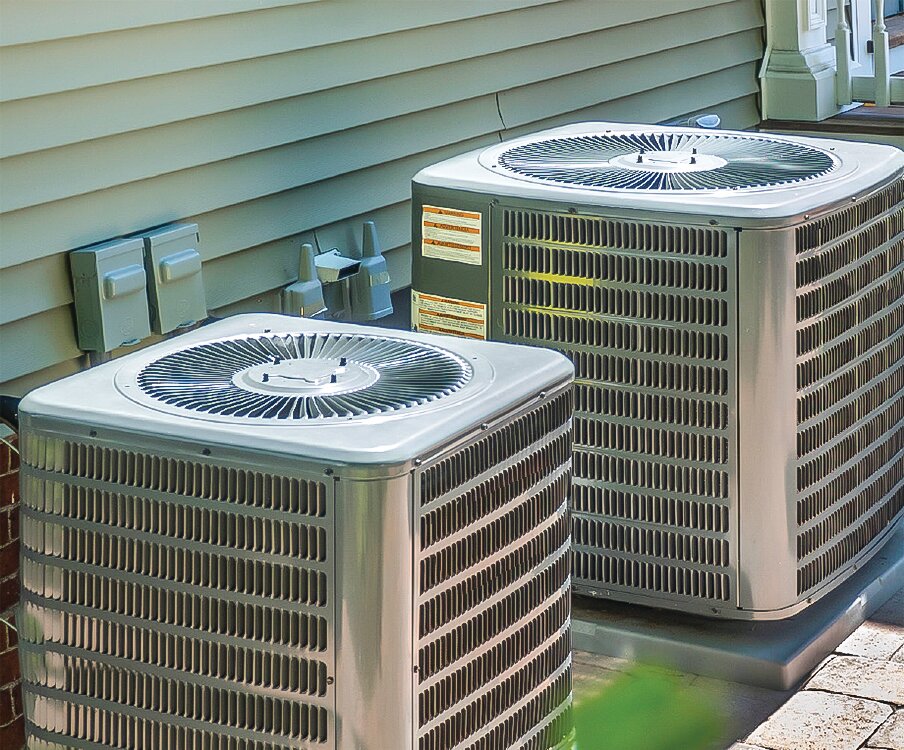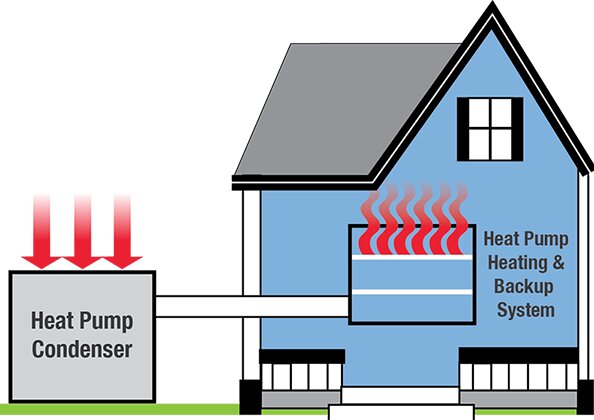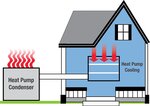Support the Timberjay by making a donation.
Making sense of heat pumps into home renovation
They’re an energy efficient heating and cooling option. But is it a right fit for your home?
REGIONAL— Today, there’s more reason than ever to look to save energy at home— it’s good for the wallet and it’s good for the planet. Here in the North Country, the vast …
This item is available in full to subscribers.
Attention subscribers
To continue reading, you will need to either log in to your subscriber account, below, or purchase a new subscription.
Please log in to continue |
Making sense of heat pumps into home renovation
They’re an energy efficient heating and cooling option. But is it a right fit for your home?
REGIONAL— Today, there’s more reason than ever to look to save energy at home— it’s good for the wallet and it’s good for the planet. Here in the North Country, the vast majority of our residential energy use goes for home heating, so that’s where you can get the biggest return if you’re looking to cut your energy bill.
With the high cost of fuel oil, in particular, many homeowners are looking to convert to alternatives, and air-source heat pumps are one option that’s getting increasing attention, even in northern Minnesota. It helps that utilities and the government both offer rebates and tax credits that will help pay the cost of buying and installing a heat-pump-based system.
Heat pumps have been around for decades, but they were mostly used in warmer climates since, until recently, they stopped working in cold temperatures, like zero or below. The technology has improved in recent years and heat pumps on the market today can operate in temperatures as cold as minus 20.
It may seem odd, but even at minus 20, there is still recoverable heat in the air that an efficient heat pump can concentrate and pump into your house. And modern heat pumps are remarkably efficient, delivering as much as 400 percent efficiency, compared to 95 percent tops for a high-efficiency propane furnace. Heat pumps can operate so efficiently because, unlike traditional forms of heating, they don’t have to burn a fuel to generate heat. Through the use of refrigerants and some remarkable engineering, they simply move existing heat from one space to another space. A heat pump can significantly reduce your heating bill, even here in northern Minnesota.
Mini-splits the
most popular
Heat pumps can come in two types, ducted or ductless. A ducted heat pump is a forced air system that typically takes advantage of existing ductwork to distribute heat throughout the house. But heat pumps don’t operate like a traditional furnace. Rather than distributing hot air, in the range of 120 degrees, throughout the house, a heat pump pushes merely warm air, which means heat pumps need to push more air to provide the same amount of total heating. That means you’ll need to confirm that your existing ductwork has the needed capacity. Many houses in our region don’t have adequate ductwork, which can make installing a ducted heat pump a challenge in an existing home.
That’s why many people are turning to ductless heat pump systems known as “mini-splits,” which connect an outside heat pump to what are essentially heating or cooling registers that mount on the wall inside the house. Yes, heat pumps not only heat… they provide cooling in the summer months with the mere flick of a switch, so you’re getting both a highly efficient heating system and a highly efficient air conditioner.
“Mini-splits are definitely the most popular type of heat pump being installed in the area,” said Scott Twining, a technician with Lake Country Power.
While most people will turn to a professional installer, the installation of a mini-split is straightforward enough that it can be a DIY project for a capable homeowner. They generally require a 240-volt electrical connection (120-volt models are available but they aren’t as efficient) to the main unit that sits just outside the house. From there, you’ll be running refrigerant and electrical lines to the individual registers (or “heads”) located in strategic locations within the house.
A system that includes two or three heads is likely to run somewhere in the vicinity of $6,000-$8,000, according to Josh Ojala, with OJ’s HVAC and Refrigeration in Ely. While most of his customers are still replacing traditional furnaces with newer versions of the same thing, he said mini-splits have become increasingly popular, particularly as they’ve become more efficient at cold temperatures.
“We installed a ton of them during COVID,” said Ojala, as people were spending more time at home and wanted greater efficiency and the air conditioning in many cases. While most of us have gotten by without air conditioning in northern Minnesota, summers like this one are a good reminder that while home cooling may not be as critical as heating here, it can certainly make life more pleasant when the temperature soars.
Other considerations
Heat pumps, like a mini-split, offer summer cooling and home heating for most of the year, but they can’t be your only heating option here in northern Minnesota. “They work really well in the shoulder months,” said LCP’s Twining. “But they don’t work as well in the depths of winter.”
That’s why heat pumps are generally used in combination with another form of heating, such as a propane furnace or electric baseboard. The heat pump will help reduce your heating bill for the vast majority of the year, but when the temperature drops well below zero you’ll need an alternative source of heat.
You might also want to keep some other type of heating nearby if you tend to run cold, especially in winter. Traditional forced air or boiler systems feel warm near the registers and that can make a nice place to warm your feet when you feel a chill. But heat pumps, whether ducted or ductless, produce air that feels much closer to room temperature. Ojala said that’s a comment he sometimes hears from customers who’ve made the switch.
If you think you’ll miss that cozy feeling of a warm corner in the living room, you might consider another heating option for that location to give you a place to warm up on a chilly winter day.
Ground source
heat pumps
There is another type of heat pump that can provide a reliable source of heating year-round, even in northern Minnesota. Ground-source heat pumps rely on the warmth underground to help heat your home and they can provide a reliable source of heating and cooling year-round.
As you might guess, ground-source heat pumps can be expensive, but they’re a sound long-term investment that will save you plenty of money. If you’re financing the construction of a new house, it would be worth looking at this heating option. If the cost is incorporated into your monthly mortgage payment, you’ll almost certainly be money ahead most months in the savings for heating and cooling you’ll achieve.
While most ground-sourced heat pumps utilize a series of tubes buried several feet in the ground, that isn’t always possible here in the North Country, where shallow soils atop bedrock are commonplace. In most cases, said Ojala, homeowners will have a second well installed and use the water as their source of heat. This sharply increases the cost of installing this type of system.
A ground-source heat pump is generally going to be used as part of a forced air system, rather than a ductless system, although it is possible to utilize a mini-split with this kind of system as well.
Rebates and tax credits
In part because heat pumps are so efficient, electric utilities are offering their customers rebates for converting to these heating systems. The total rebate varies but can lower the installation cost by about 10-15 percent.
There are also new federal tax credits that were approved as part of the Inflation Reduction Act, but the specifics on how to obtain the credits, and how much they might amount to, hasn’t been finalized. Ojala said he expects to see the final guidelines out before the end of the summer.













